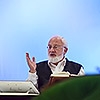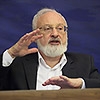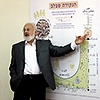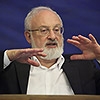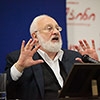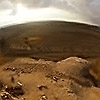First And Second Restriction
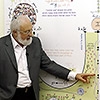 This is the meaning of our sages’ words (Beresheet Rabbah, end of Portion 12): “In the beginning, He contemplated creating the world with the quality of judgment [Din]. He saw that the world could not exist and brought forward the quality of mercy [Rachamim] and associated it with the quality of judgment” (Baal HaSulam “Preface to the Wisdom of Kabbalah” Item 58).
This is the meaning of our sages’ words (Beresheet Rabbah, end of Portion 12): “In the beginning, He contemplated creating the world with the quality of judgment [Din]. He saw that the world could not exist and brought forward the quality of mercy [Rachamim] and associated it with the quality of judgment” (Baal HaSulam “Preface to the Wisdom of Kabbalah” Item 58).
We want to receive pleasure; it is our nature. The first restriction says that it is forbidden to receive from the Creator for our own sake; we will not receive anything and will remain in the emptiness.
The Creator, as if, raised the quality of Malchut into Binah, meaning mixed the quality of judgment with the quality of mercy. After all, the world cannot exist, but only by restrictions. Therefore, even in our world, we can not only receive, but also give something, albeit purely egoistically.
The second restriction is the prohibition of using egoistic Kelim even for the sake of the Creator.
[319547]
From KabTV’s “Preface to the Wisdom of Kabbalah” 9/26/23
Related Material:
The Difference Between The First And The Second Restriction.
The First And Second Restrictions
Where Did All This World Come From?

